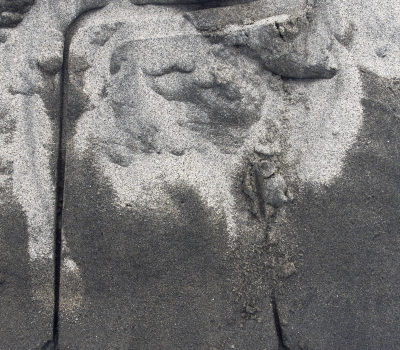Luis Carlos Tovar was born in 1979 in Bogotá, where he studied visual arts at the University of the Andes, majoring in the history and theory of architecture. His research gradually led him to the exploration of historical memory via site-specific installations. He has exhibited in Bogotá, Buenos Aires and New York.
“How do we live, and how do we appropriate the setting we live in? In my homeland the plastic Rimax chair has become a popular icon. You find it everywhere: in houses, bars, schools, offices, churches, city halls, brothels and even in the president’s home. It gave me an excuse for trekking the whole length of the Colombia coast on foot, which offered a totally new view of things. Every place you go has its own geography, and the colour of the sand changes with the people and the local customs. Hot on the Rimax chair trail, I recorded its presence by making drawings and imprints on the beaches along the way: walking as an aesthetic act, the country as my witness and the chair as a pretext.
There’s an anthropology of walking – and of sitting down as well. As conceptual artist Joseph Kosuth once said, ‘The chair is neither a fundamental idea nor a crystallised concept; it’s a starting point for the negotiating of the senses.’ Kosuth is the man who made One and Three Chairs – there’s a version in the Centre Pompidou in Paris. I admit to various influences: for this series I could mention the painters Jaime Arango and Santiago Cardenas, and visual artist Doris Salcedo, three Colombians who like to reflect on the vulnerability and transformation of matter in the course of time. Photography, used here as a tool for exploration, came to me by accident: out of a need to record the way light uses space to foreground time.”
Françoise Huguier, curator
Text from the catalogue-book “Photoquai”, co-edited by Musée du Quai Branly- Actes-Sud
















